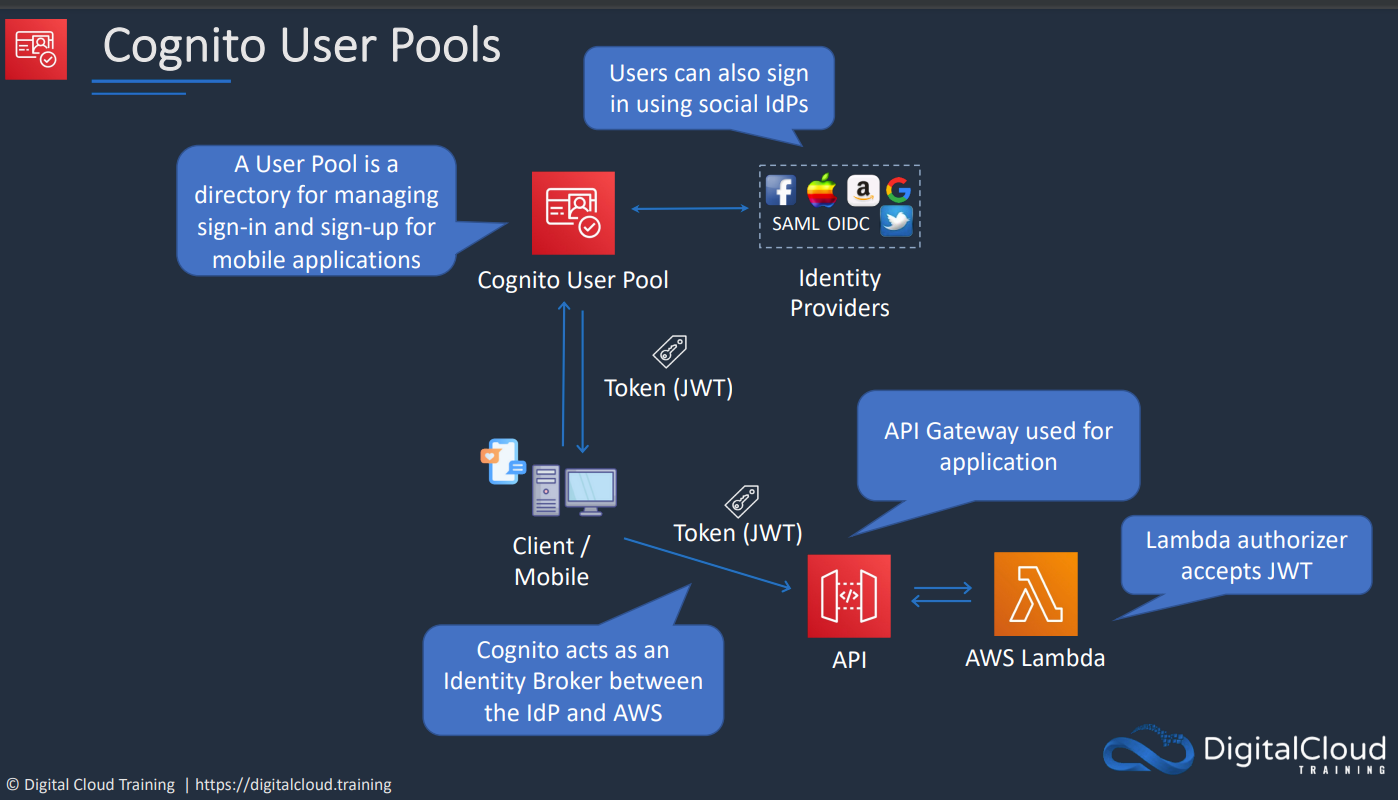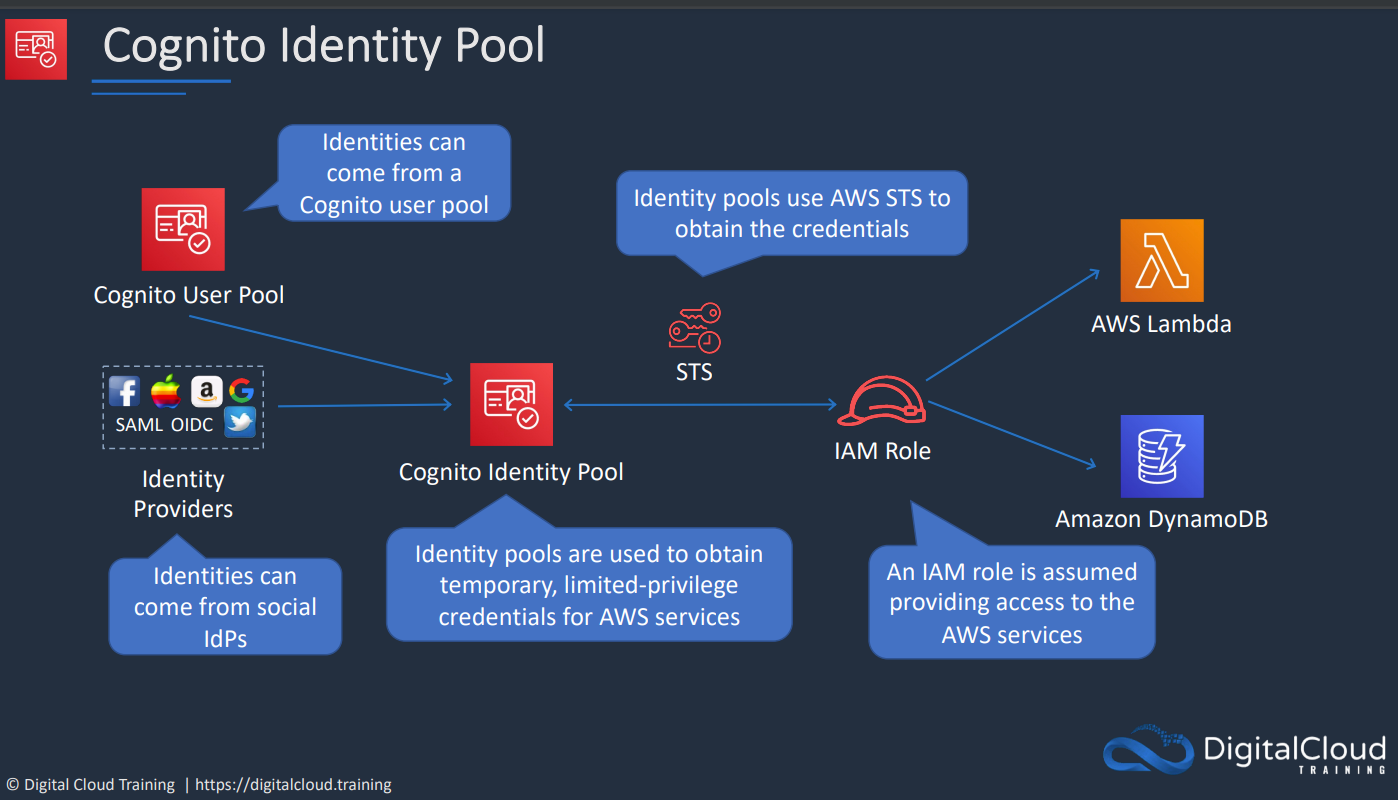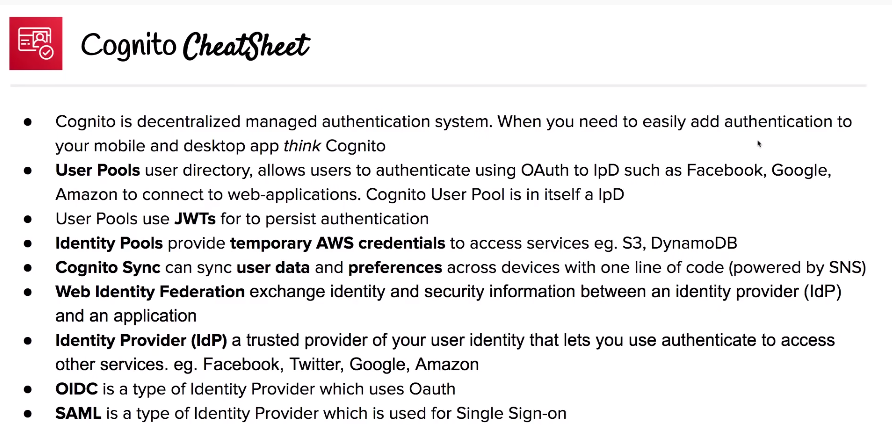# Amazon Cognito
#aws #cloud #security
Decentralised way of managing Authentication by AWS.
There are two types of pools: Cognito Identity Pools as well as Cognito User Pools
# Web Identity Federation and IpD
# Web Identity Federation
To exchange identity and security information between an #Identity Provider IdP and application.
# Identity Provider (IdP)
a trusted provider of your user identity that lets you use authenticate to access other services. Identity Providers could be: Google, Facebook, GitHub, etc
types: 1. Security Assertion Markup Language (SAML) 2. OpenID Connect (OIDC) OAuth (Used by Google, Facebook, Github, etc)
# Cognito User Pools
User directory with authentication to
#Identity Provider IdP to grant access to your app to manage actions for web and mobile apps such as:
1. Sign-up
2. Sign-in
3. Account recovery
4. Account Confirmation

Allows users to sign in directly to the user pool or using Web Identity Federation.
Uses AWS Cognito as the identity broker between AWS and the identity provider.
Successfully authentication generates a JSON Web Token (JWTs).
User Pools can be thought of as the account used to access the system (ie. email address and password)
- Choose password requirements
- Apply MFA
- Restrict whether users are allows to signup on their own or need admin verification.
- Analytics with Pinpoint for user campaigns.
- Trigger custom log via Lambdas after actions such as signup
# Cognito Identity Pools
Identity Pools provide temporary AWS credentials to access services eg. S3 DynamoDB. Identity Pools can be thought of as the actual mechanism authorising access to the AWS resources.

# Cognito Sync
Sync user data and preferences across devices with one line of code.
Cognito uses push synchronisation to push updates and synchronise data. Uses SNS to send notifications to all user devices when data in the cloud changes.
